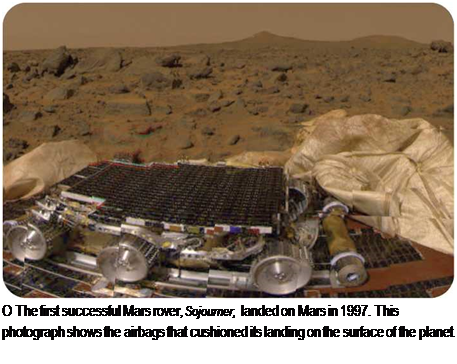Rockets and Spacecraft
Launching a large rocket or Space Shuttle is a complicated process. It may take several weeks or months to prepare the vehicle for liftoff. The final countdown begins one to two days before the actual launch. Then, many events have to take place at the right time and in the correct order. Holds, or pauses, in the schedule are included in the countdown so that minor problems can be handled without delaying the launch itself. The last few minutes of a countdown usually are controlled by computer. Finally, the engines fire and produce powerful jets of gas that thrust the vehicle upward into the air.

Some rockets are programmed to make splash landings in the ocean so that they can be retrieved. Others are designed to burn up in the atmosphere after they have completed their task of launching a spacecraft of some kind.
All of the spacecraft that carry astronauts and some unmanned space vehicles are carefully designed to make safe, controlled landings. The Space Shuttle is the only manned spacecraft that lands on a runway. Other spacecraft have to slow their descent by other methods.
If a spacecraft descends through an atmosphere, whether on Mars or Earth, it can use the air resistance in the atmosphere to reduce its speed. As the spacecraft descends, it experiences drag, which slows it down. Then it can use parachutes to slow down even more.
When landing on solid ground, a spacecraft may fire rockets downward as a final brake just before touchdown. The manned Russian Soyuz capsules and Chinese Shenzhou capsules land on Earth in this way. In the 1960s and 1970s, the Mercury, Gemini, and Apollo missions also used space capsules to bring their astronauts back to Earth. The capsules had only parachutes to slow them down, and they landed in water.
Where there is no atmosphere, on the Moon for example, rockets are used to control the craft’s speed throughout the entire descent. The Apollo mission’s lunar landers used this method to land on the Moon. Another landing method was devised for the Mars mission. Just before the Spirit and Opportunity rovers landed on Mars, airbags inflated around them. They hit the surface, bounced and when they came to a halt, the bags deflated, the landers opened, and the rovers drove away.










